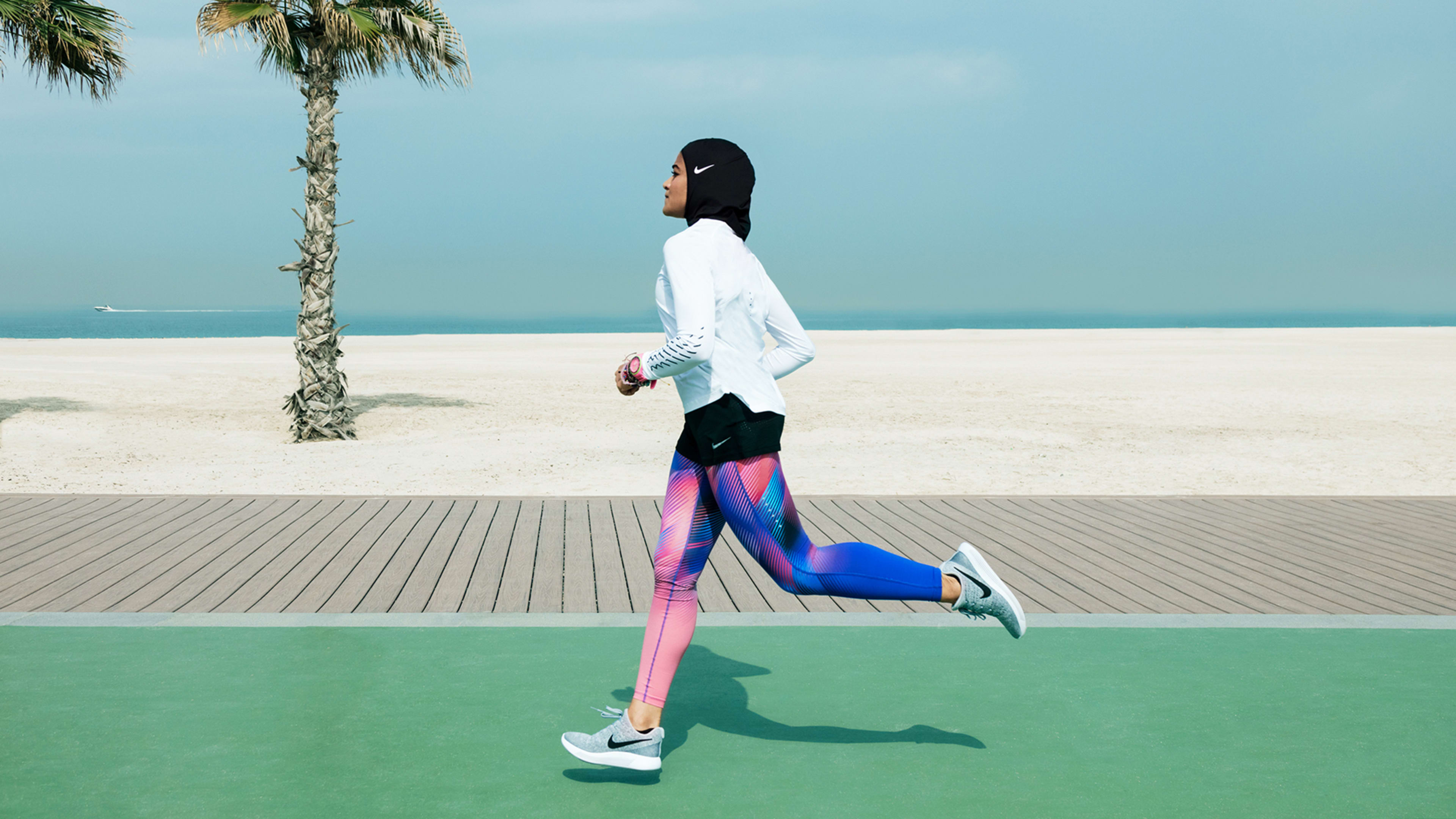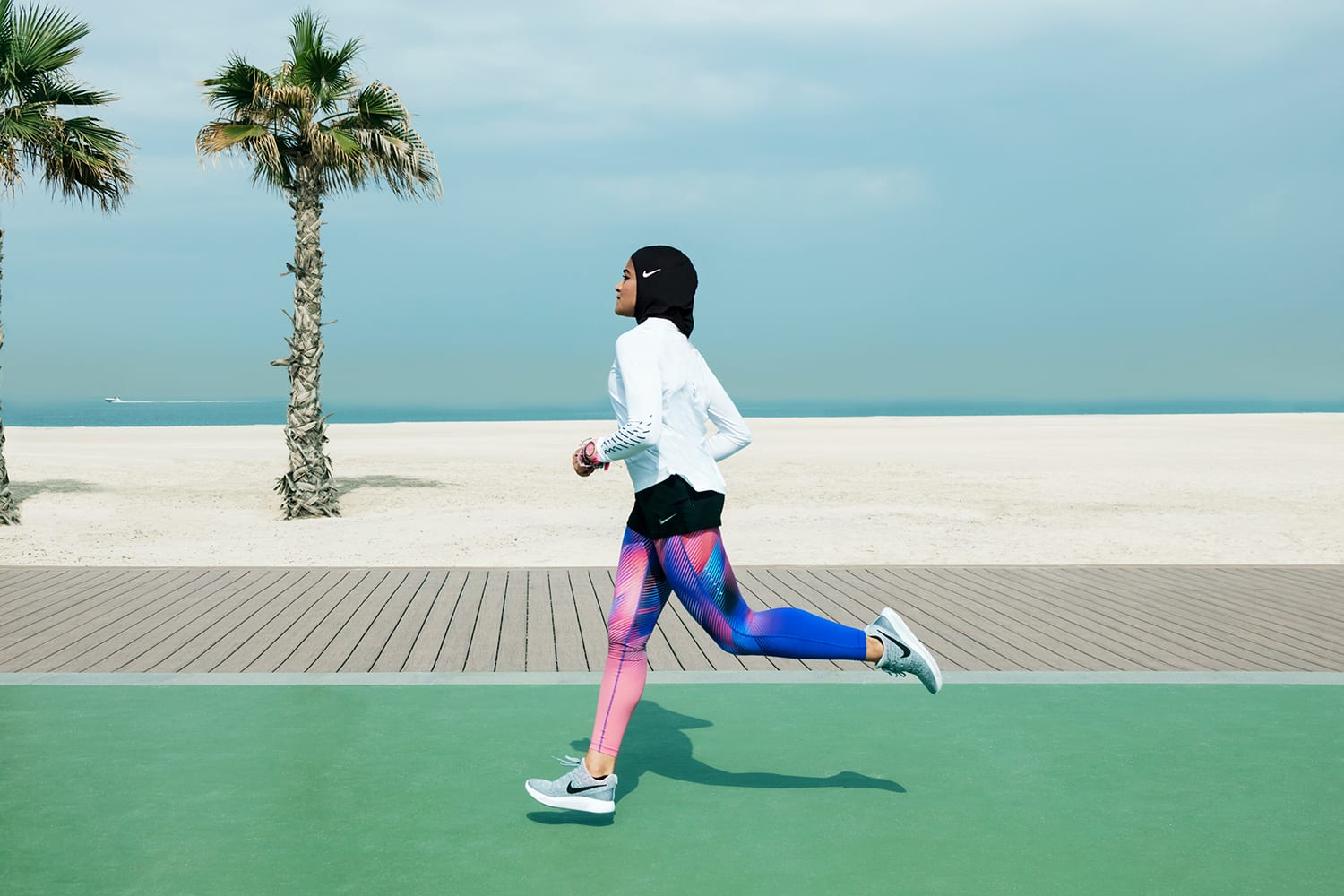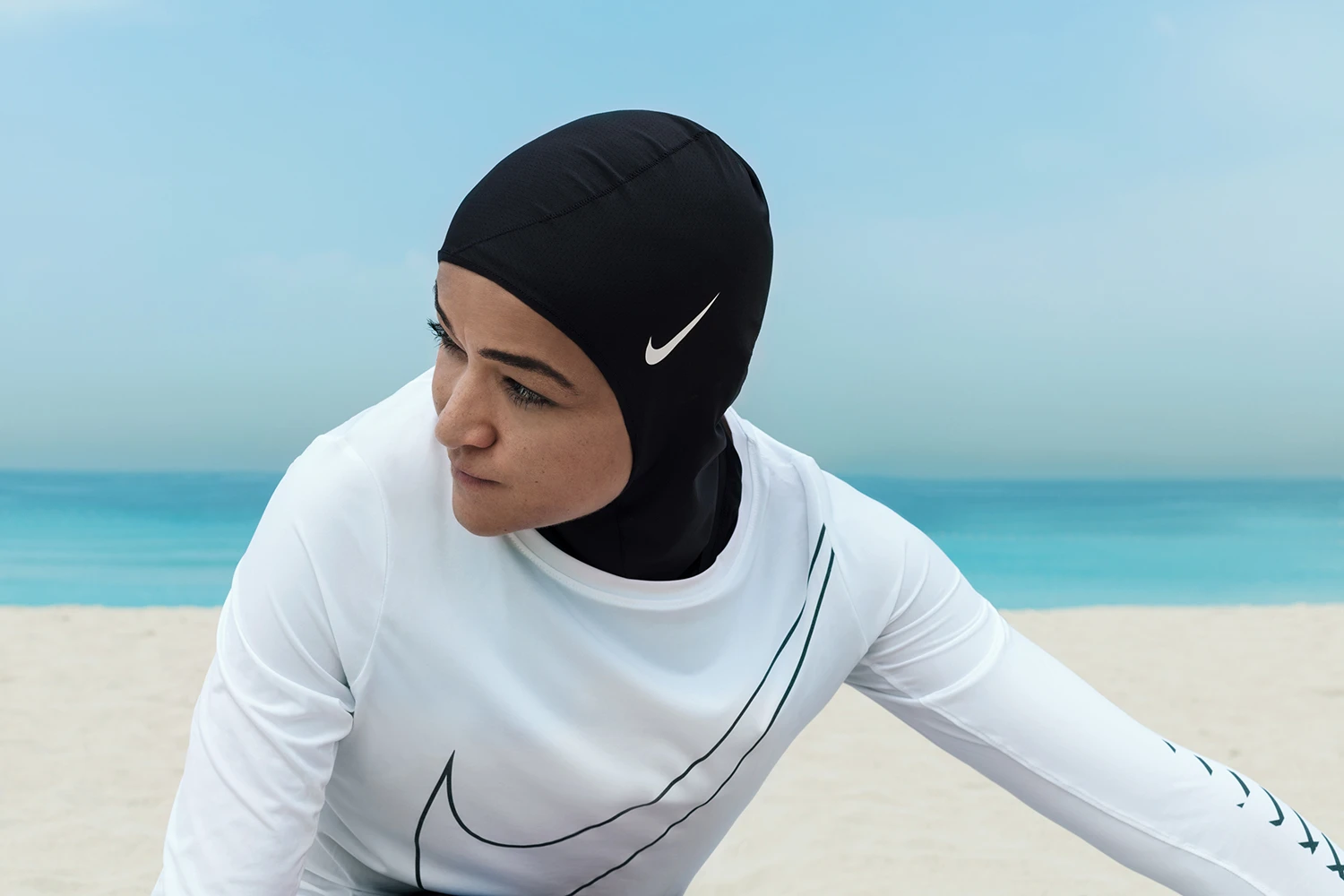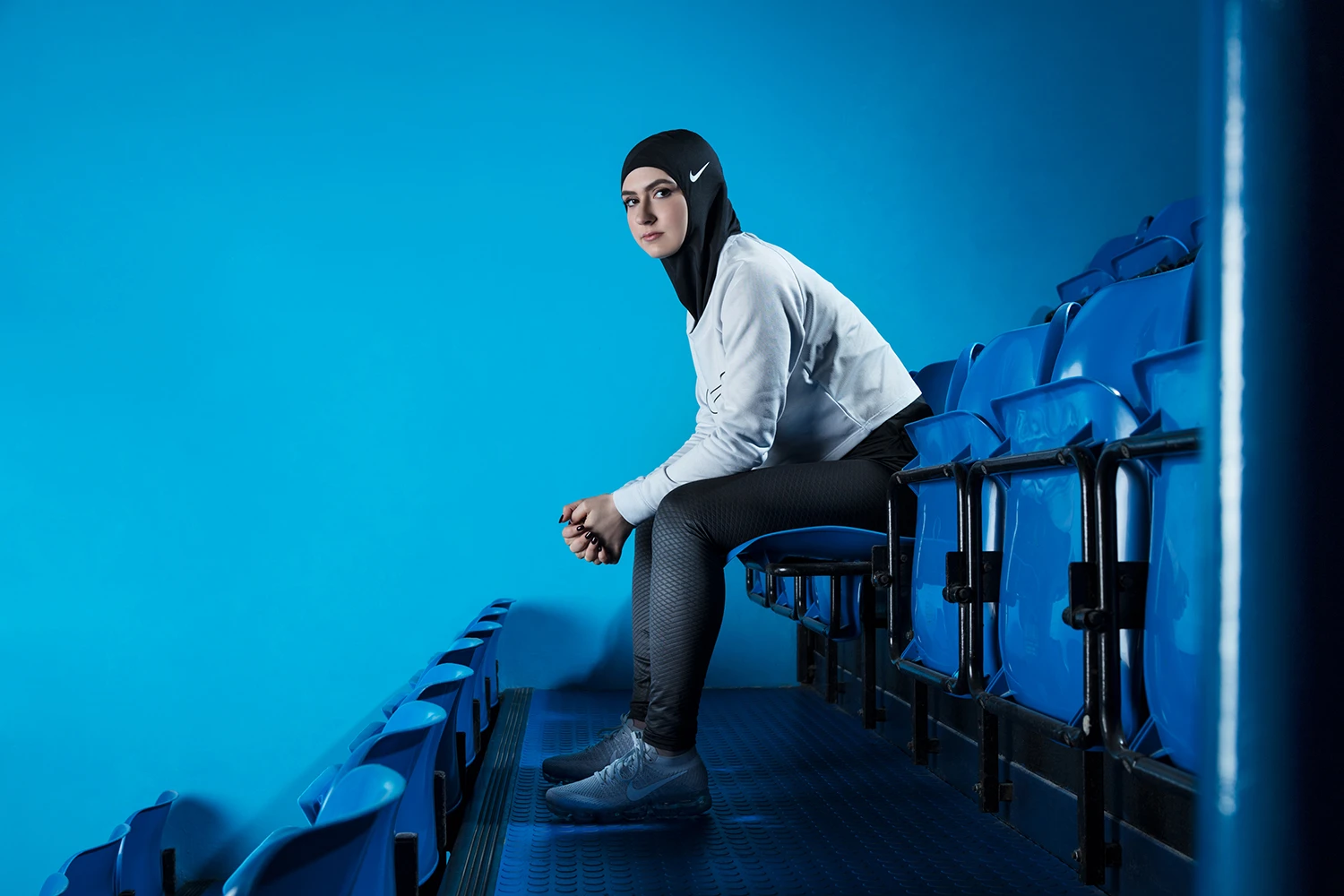It was two years ago when Amna Al Haddad, while training for the Rio summer Olympics, got the call: Nike wanted to sponsor her and give her a starring role in its “Inner Strength” series featuring inspiring athletes.
Al Haddad certainly fit the bill: The now 27-year-old Dubai woman is a former journalist who turned a decision to get healthier and go to the gym into a pioneering competitive weightlifting career. She’s also a Muslim who comes from a region that discourages women from becoming athletes and requires them to adhere to the religion’s dictates on modest dress.
When Al Haddad, who proudly wears the Muslim head covering known as a hijab—even when she competes—got to Nike’s training campus, the company’s research team was keen to find ways to help her improve her performance. Experts from the sports lab cast her foot in plaster and hooked her up to machines to study every inch of her body in motion. While she appreciated all this high-tech analysis, her most fundamental need as an athlete was much more basic: she needed a hijab that would stay in place and not make her sweat as much.
“They were studying me from the neck down, not from the neck up,” Al Haddad tells Fast Company. “But when we sat down to talk about the challenges of sportswear in my field, I brought up the idea of a sports hijab and how it could help Muslim athletes around the world.”
And so, the $27 billion sportswear giant—known for remarkable inventions like sneakers with self-tying laces, a foam footbed that uses NASA technology to absorb shock, and gravity-defying sports bras—found its next big thing.
“Our design team that obsesses over athlete insights all thought, Oh my gosh, this is the thing! This is what we can solve for her,” says Megan Saalfeld, senior director of communications at Nike. “Pretty much immediately, we began to percolate about what it would mean to create a performance hijab.”
“We already have a robust innovation pipeline and so many tools at our disposal,” Saalfeld continues. “We had all these lightweight, breathable materials that would work well and seams that would not irritate the skin.”

The Nike head covering solves a need Al Haddad had struggled with until the day she found a stretchy hijab at a local market that seemed to stay in place. Every night after she was at the gym, she would wash it in the sink, then hang it out to dry so she could wear it the next day.
Al Haddad never dreamed of becoming a competitive athlete. In fact, very few girls in the Arab world do. Al Haddad has a distinct memory of a fun moment in fifth grade when the girls and boys played soccer together in gym class. But shortly after that, boys and girls often went to gender segregated middle and high schools. Even in the few co-ed schools, sports classes were always separated by gender.
“There’s a lot of misconceptions and negative perceptions about women in sports,” Al Haddad tells Fast Company. “There’s this idea that a weightlifting is going to make a woman bulky and more manly; there’s a sense that it’s bad for a man to see a woman’s body moving during exercise. There’s a lot of different opinions on the matter.”
There were also significant differences in how male and female P.E. classes were carried out, Al Haddad explains. Girls classes tended to be focused on fitness, rather than competitive sports: “We did things like jumping jacks,” she recalls. Meanwhile, boys would play basketball and soccer, and race one another on the track. At an early age, they were given a chance to challenge one another and could dream about being a world-famous sports star or competing for their country.
Al Haddad ended up in a gym when she was in her early twenties and beginning a career as a journalist. At the time, she had been in a bit of a funk. She felt aimless and depressed, and needed to shed a few pounds after several years of unhealthy living. “I just didn’t like who I was,” she says.
Unwilling to give into her depression, and hoping to lose some weight, she decided to take a small step. She took a walk. A few days later, she found her way to a gym with a CrossFit program. She was intrigued by weightlifting component of the sport, so she began focusing on strength training. She was often the only woman on the bench, but it didn’t matter: she was hooked.
She describes weightlifting as a kind of meditation. Before each set, you must breathe and prepare your body for the exertion. The moment between lifting the weight and then holding the bar on your shoulder seems to totally disappear.
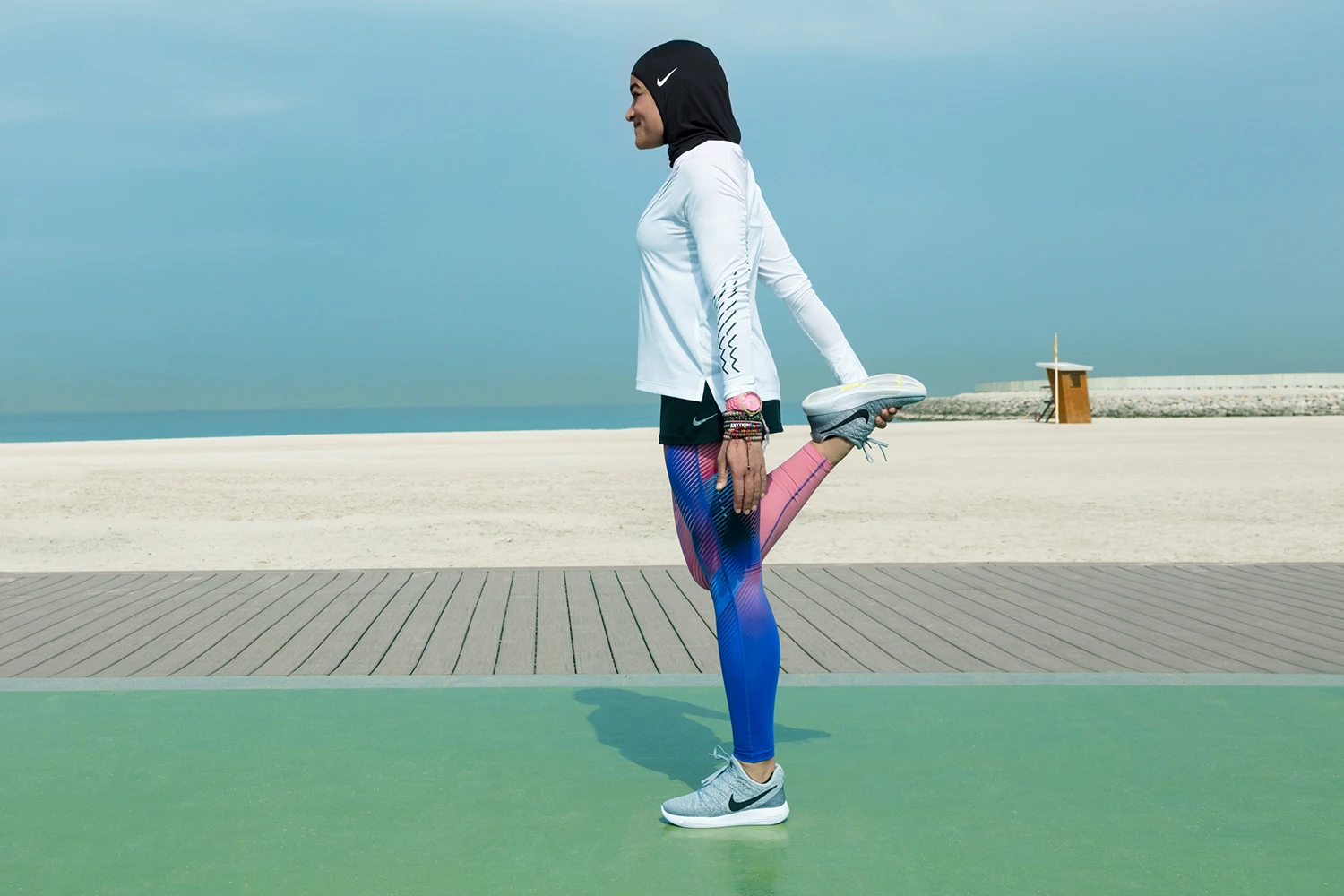
But there were other women who were inspired by what Al Haddad was doing. She started giving talks in front of crowds of hundreds of people, encouraging women to see sports as a positive force. She would talk about how fitness can help women reduce their body fat, strengthen their bodies for childbirth, and give them confidence.
At the same time, she kept improving her personal best. In 2012, she became the first woman from the Arab world to compete in CrossFit’s Asia regional competition.
“I made history, but I realized I could do more,” she says. “I wanted to do something where I could represent my country (the United Arab Emirate) on an official level. I had fallen in love with weightlifting and I remember watching the Olympics on TV and thinking, I want to be there.”
But in the end, a back injury benched her. While she helped the UAE team qualify for Rio, she wasn’t able to go herself. She was disappointed, but what has helped her get through it is the fact that she’s been able to pave the way for other Arab women to participate in competitive sports—and has also helped create a sports hijab that will hopefully encourage young Muslim women to get involved in athletic pursuits.
For Nike’s part, the sports hijab opens the door to a wider range of possible products for under-served population of Muslim women—800 million worldwide —and an athleisure market valued at $97 billion.
“(The hijab) has definitely opened up a bigger conversation about other product needs and other things we can do in the market,” Saalfeld says. “If there are needs and we can solve them, we absolutely will.”
The hijab has sparked debate for years among Muslims and non-Muslims alike. The issue: some see it as a form of oppression or, in Western nations, an unwillingness to assimilate.
That debate has intensified with President Donald Trump’s stymied pursuit of a travel ban on several Muslim countries, increased attacks on U.S. Muslims, or people perceived to be Muslim, and growing Islamophobia.
Artist Shepherd Fairey created a striking image of a woman wearing an American flag as a hijab for the anti-Trump protests that swept the nation soon after his inauguration in January. The image was designed to symbolize female Muslim empowerment and inclusion in the women’s march on D.C.
Nike was criticized in some corners when it announced its intention to produce the Pro Hijab. Al Haddad herself, as a face of the campaign, was often at the receiving end of it. “I think the mixed reaction is a result of confusion,” Al Haddad says. “A lot of people see it as a form of oppression. For me, I see it as a form of inclusion: there are women out there who believe in doing sports in the hijab and Nike has created a solution.”
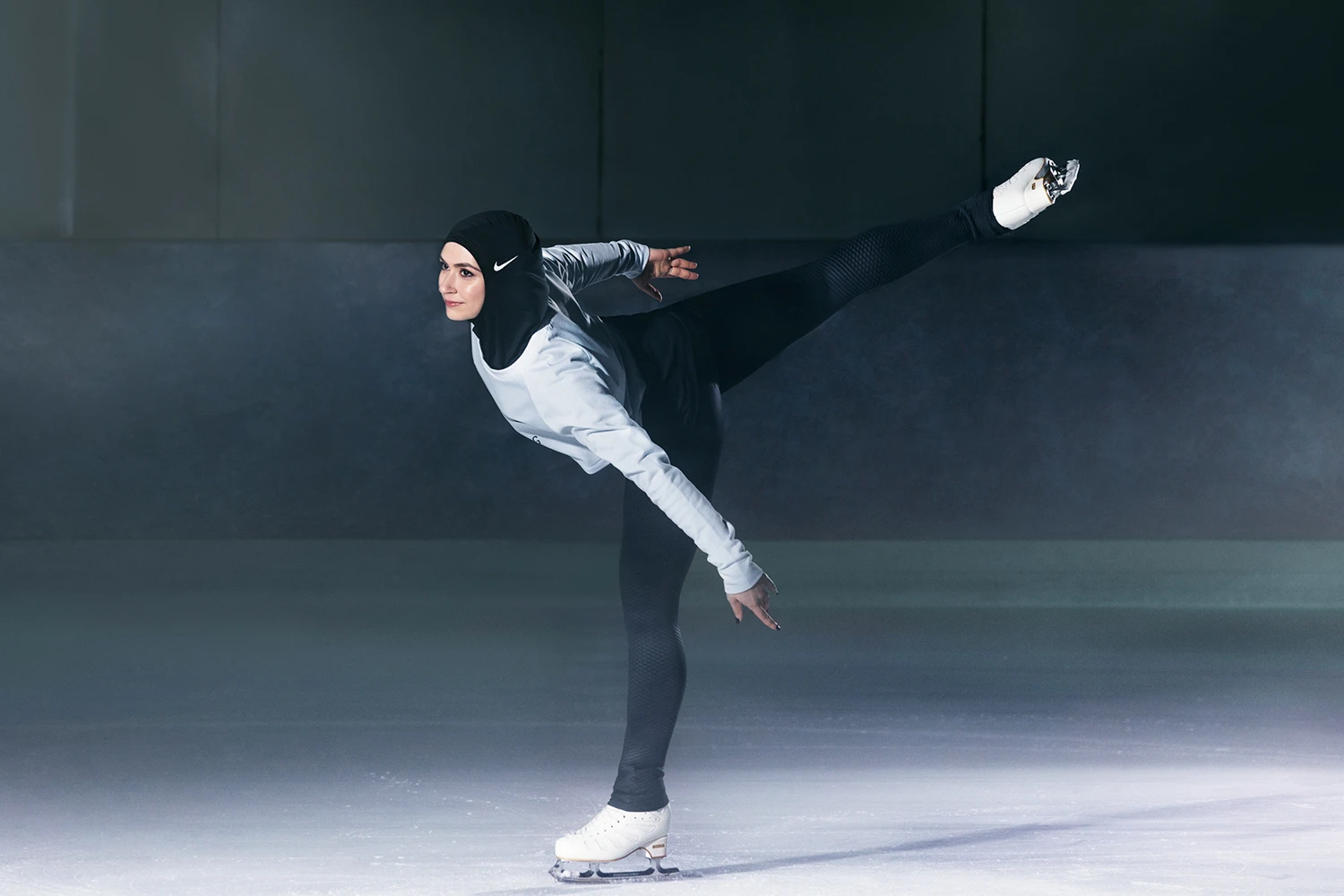
“There’s a change happening in the world,” Al Haddad says. “You can see it when a big brand like Nike creates a sports hijab. As a result of stories like mine—and many others—Nike took notice that there is a market for products that meet our needs as Muslim athletes.”
Recognize your company's culture of innovation by applying to this year's Best Workplaces for Innovators Awards before the extended deadline, April 12.
